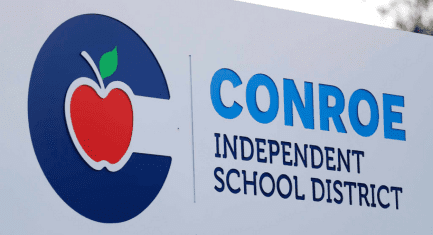Lobbying, seeking to influence a politician one way or another on an issue, is a constant in politics. Renewable energy companies have used lobbyists to advance their interests in Austin for years, spending millions in an effort to gain billions in subsidies.
Meanwhile, the financial burden of subsidizing unreliable green energy rests squarely on the citizens who later suffer when the power goes out.
Background
In 2021, a series of major winter storms rolled into Texas, bringing snow, freezing temperatures, and power outages for millions of Texans. Today, in the middle of a punishing heat wave, Texans are being asked to reduce their energy use so the power grid won’t be overloaded.
Currently, 25 percent of the Texas power grid runs on unreliable renewable energy sources. During the 2021 winter storm, production in many renewable sectors, especially wind and solar, was significantly reduced—or even completely halted—by the storm.
Today, low winds are damaging the grid’s ability to keep up with demand, according to a news release from the state’s power grid operator, the Electrical Reliability Council of Texas (ERCOT). On Monday, ERCOT projected wind generation would come in at 8 percent capacity.
The inefficacy of renewable energy leads to discussions of why it comprises such a large portion of the energy grid.
How big is the green energy lobby in Texas?
Businesses and industry groups often hire lobbyists to influence legislators in Austin, generally by wining and dining them or providing tickets to exclusive events. Those same businesses occasionally donate to lawmakers through their political action committees (PACs), organizations that campaign for particular political policies and give money to political parties or candidates who support those policies.
According to a 2021 analysis from Transparency USA, companies whose primary source of income is renewable energy (including solar, wind, and nuclear) have spent up to $71.7 million in Texas lobbying efforts since 2015.
The total amount of money spent by lobbyists likely climbs even higher if companies with a strong interest in green energy—like Shell and AT&T—are included.
Additionally, since 2015, Texas green energy-related PACs have spent more than $8 million on Texas state politics.
Result of lobbying
Although it is impossible to say exactly how much influence lobbying has on laws passed in Texas, it is fair to say that lobbyists can sway the political tides in Austin.
Subsidies are a huge draw for lobbying efforts in Austin. The Texas Public Policy Foundation explains that energy subsidies distort markets without providing sufficient incentive to improve technology or shift the energy landscape. This means that renewable energy companies exist in a bubble where they are funded even if they are not innovating or providing value to the energy market.
Currently, according to records compiled by the Texas Comptroller’s office, there is almost $18 billion in Texas subsidies for renewable energy through 2029.
After investing $71.7 million in lobbying, green energy companies have received and will continue to receive subsidies from the Texas government totaling almost $18 billion. That means that they are gaining more than 76 times their original investment.
The impact on Texas taxpayers
Research by the Texas Public Policy Foundation found that more than $80 billion in tax dollars have been spent on federal wind and solar subsidies in the last decade. Texans are also charged an average of $1.5 billion a year for state subsidies in renewable energy.
Meanwhile, wind and solar—both less reliable than traditional energy—receive more subsidies per unit of electricity granted than oil, gas, or coal. Wind receives 17 times more, while solar receives a whopping 75 times more subsidies per unit of electricity generated than the average for oil, gas, and coal.
In addition to these direct subsidies, the Texas Public Utility Commission used an administrative pricing mechanism to add $2.5 billion a year to the cost of electricity in an attempt to fix grid reliability problems created by unreliable renewable energy.
Renewable energy comprises a quarter of the Texas electrical grid and is heavily subsidized, despite being less reliable and more expensive than traditional energy sources. The vast political force of lobbying influences which companies get pushed forward by lawmakers, and renewable energy companies are not afraid to spend extensive amounts of money on lobbying efforts.
Tracy Marshall, the executive director of Transparency USA, says citizens becoming aware of the money behind lobbying efforts is key.
“People are always surprised to find out that the real money in politics is in lobbying. Lobbying money always dwarfs all donations from individuals and PACs combined,” Marshall told Texas Scorecard. “If you want to see who’s influencing your government — whether it’s green energy or any sector you’re interested in — take a look at the lobbyists. That’s why at Transparency USA, we make it easy for citizens to see all the money flowing to Austin politicians, including the lobby money.”





